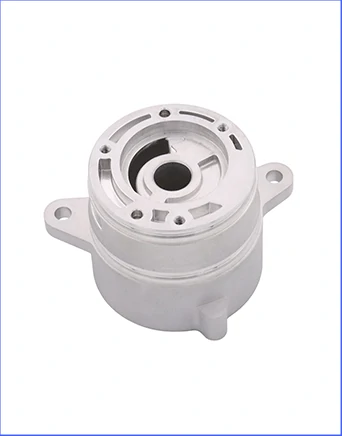Time to read: 6 min

The automotive industry's demand for lightweight, high-strength, and cost-effective components has driven the adoption of zinc die casting. This article explores the significance of zinc die casting in the automotive sector, highlighting its benefits, process, and applications.
Zinc Die Casting: A Necessity for Modern Automobiles
Zinc die casting is a manufacturing technique that has gained prominence in the automotive industry due to its ability to produce intricate, high-precision parts with exceptional strength and surface finish.
The Hot Chamber Die Casting Process
The hot chamber die casting process is ideal for zinc alloys, given their low melting point. It involves melting the zinc alloy and injecting it into a mold cavity under high pressure, allowing for the creation of parts with complex geometries and thin walls.
Why Zinc Die Casting is Preferred in the Automotive Industry
Zinc die casting offers several advantages that make it a preferred choice for automotive components:
- High Strength and Hardness: Ensuring the durability and safety of automotive parts under various driving conditions.
- Electrical Conductivity: Facilitating the integration of electronic components in modern vehicles.
- Cost-Effectiveness: With lower material and production costs compared to other metals.
- Complex Geometric Features: Enabling the design of intricate parts with thin walls and high dimensional accuracy.
- High Dimensional Tolerance: Maintaining consistent part quality and reducing the need for post-processing.
- Good Surface Quality: Resulting in a smooth finish that requires minimal finishing.
- Corrosion Resistance: Protecting components from the elements and extending their lifespan.
- Environmentally Friendly: With energy-efficient production and recyclability of zinc.
Applications of Zinc Die Casting in the Automotive Industry
Zinc die casting is utilized in a variety of automotive components, including:
- Safety Components: Such as gears and pulleys in seat belt systems and door lock housings.
- Enclosures: For airbags and electrical components like sensors and switches.
- Rearview Mirrors: With integrated electrical components.
- Sunroof and Windshield Wiper Mechanisms: Requiring corrosion resistance.
- Chassis Parts, Brackets, and Transmission Components: Benefiting from zinc's strength and hardness.
Comparison with Aluminum Die Casting
While aluminum die casting is a competitor in the automotive industry, zinc die casting offers a unique set of benefits that often make it the more suitable choice. Zinc's lower melting point, high strength, fine surface finish, and good electrical conductivity are particularly advantageous.
Conclusion
Zinc die casting plays a vital role in the automotive industry, providing a range of benefits that contribute to the performance, safety, and longevity of vehicles. With the hot chamber die casting process, manufacturers can produce high-quality zinc components with precision and efficiency.




